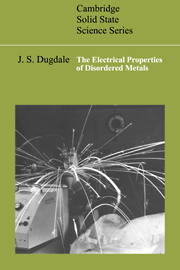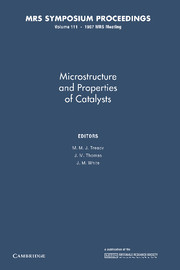The Electrical Properties of Disordered Metals
The theory of how metals conduct electronically had for a long time been confined to metals that are crystalline with the constituent atoms in regular arrays. The discovery of how to make solid amorphous alloys led to an explosion of measurements of the electronic properties of these new materials, and the emergence of a range of interesting low temperature phenomena. This 1995 book describes in physical terms the theory of the electrical conductivity, Hall coefficient, magnetoresistance and thermopower of disordered metals and alloys. The author begins by showing how conventional Boltzmann theory can be extended and modified when the mean free path of the conduction electrons becomes comparable with their wavelength and interionic separation. The consequence of this is explored and the theory tested by application to experimental data on metallic glasses. Designed as a self-contained review, the book will appeal to non-specialist physicists, metallurgists and chemists with an interest in disordered metals.
- Simple mathematical terms are used throughout
- Self-contained approach
- Well-regarded author
Product details
July 2005Paperback
9780521017510
256 pages
228 × 154 × 15 mm
0.39kg
64 b/w illus.
Available
Table of Contents
- 1. Introduction
- 2. Production and structure of metallic glasses
- 3. Electron transport in metals: introduction to conventional theory
- 4. Scattering
- 5. Simple liquid metals: Ziman theory
- 6. Phonons in disordered systems
- 7. Interactions and quasi-particles
- 8. Transition metals and alloys
- 9. The Hall coefficient of metallic glasses
- 10. Magnetoresistance
- 11. Electrical conductivity of metallic glasses: weak localisation
- 12. Interaction effect or Coulomb anomaly: density of states
- 13. The effect of the enhanced interaction effect on conductivity
- 14. The effect of a magnetic field on the enhanced interaction effect
- 15. The thermopower of disordered metals and alloys
- 16. Comparison of theory and experiment
- Appendices.






